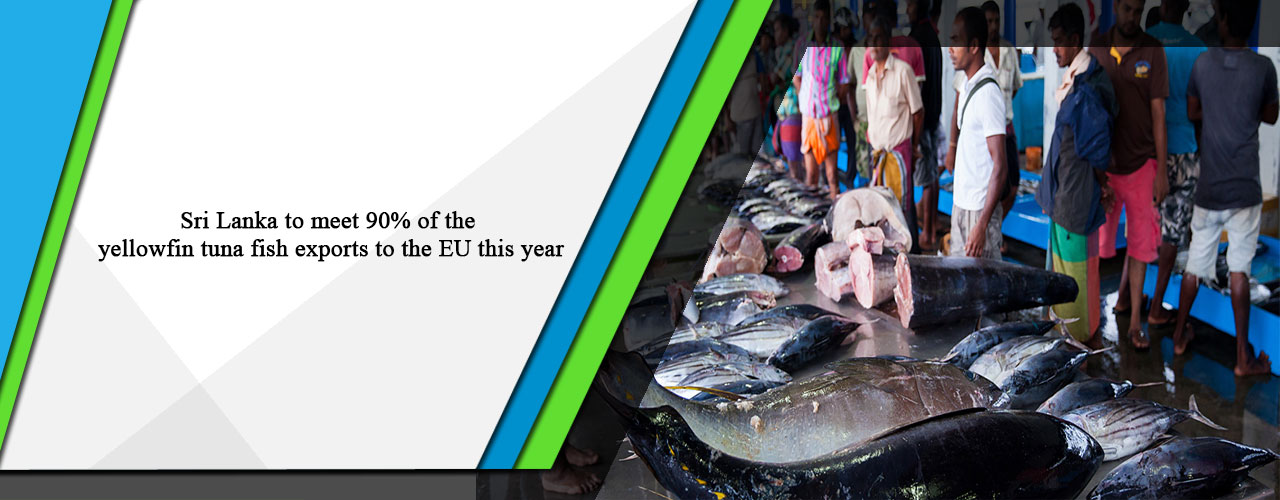Sri Lanka to meet 90% of the yellowfin tuna fish exports to the EU this year
The European Union (EU) has given Sri Lanka a quota of 5,600 tonnes of yellowfin tuna fish for this year and Sri Lanka’s State Ministry of Ornamental Fish, Inland Fish and Prawn Farming, Fishery Harbour Development, Multi-day Fishing Activities, and Fish Exports is to export about 90% of that quota to European markets this year.
Speaking to The Morning, subject State Minister Kanchana Wijesekera has stated that fish exports usually do not have an assigned annual target, but the industry is planning to achieve the aforementioned target this year.
The State Minister highlighted that Sri Lanka’s main fish export market is Europe.
“Due to the global pandemic of Covid-19, Europe has been under lockdown for most of last year. This resulted in the demand for Sri Lankan fish exports decreasing from the foreign consumer base and European restaurants in 2020,” he has noted.
In addition to this, other effects of the global pandemic of Covid-19 on the Sri Lankan fish export industry included a decrease in production and increase in trade costs in relation to airport restrictions which resulted in a decrease in export value as well.
Wijesekera has explained that due to the first and second clusters of the global pandemic, Covid-19, in Sri Lanka, especially with regard to the Peliyagoda cluster that occurred last year, most of the fishermen and their associates were quarantined. Thereby, the harvest that was arriving from the vessels that were out at sea could not be collected due to the quarantine. Also, the decrease in demand of Sri Lankan seafood and fish exports influenced fishermen to be reluctant to go back into the ocean. Secondly, the airport restrictions that were initiated because of the pandemic influenced a rise in trade costs for seafood and fish exports in the country, leading to a decrease in export revenue with regard to increased costs.
Wijesekera has reportedly said that the Ministry is currently negotiating with SriLankan Airlines to lower their trade cost in order to resolve this issue.
Despite the 40% decrease in the local demand for fish last year, State Minister Wijesekera has noted that the demand in the local market has stabilised to the point that was present in 2019 prior to the pandemic.
Commenting on production targets and foreign imports, Wijesekera has said: “We have made plans for productions for about 450,000 metric tonnes per year which is coming from the ocean resources. We import about 90,000 metric tonnes annually and we also import canned fish and dry fish for another 70,000. So our requirement is about 650,000 metric tonnes. Thus, we have identified the substitutes for imports. Basically, the 90,000 dry fish and food fish that are being imported, we have identified to substitute that from the inland fisheries sections of dry fish and also food fish.”
He has added, “The canning requirement is about 250,000 cans per day, and our capacity that we were going at in the local market was 30,000 worth of local production. However, we have increased that to about 200,000 last month in canning from our requirement. Our target is to achieve the 250,000 that we have in the local market through local production.”
OSL take:
Sri Lanka’s geographical positioning in the Indian Ocean and the many trade agreements as well as trade concessions enjoyed by the country have made it a business hub in the South Asian region. Also, the fact that the country is surrounded by the sea has helped the country’s fisheries industry. Given the EU’s quota for Sri Lankan fish exports, Sri Lanka’s fisheries industry posses many business/investment opportunities. Foreign businesses/investors could confidently explore opportunities in Sri Lanka’s fisheries industry.
| Article Code : | VBS/AT/20210120/Z_8 |

